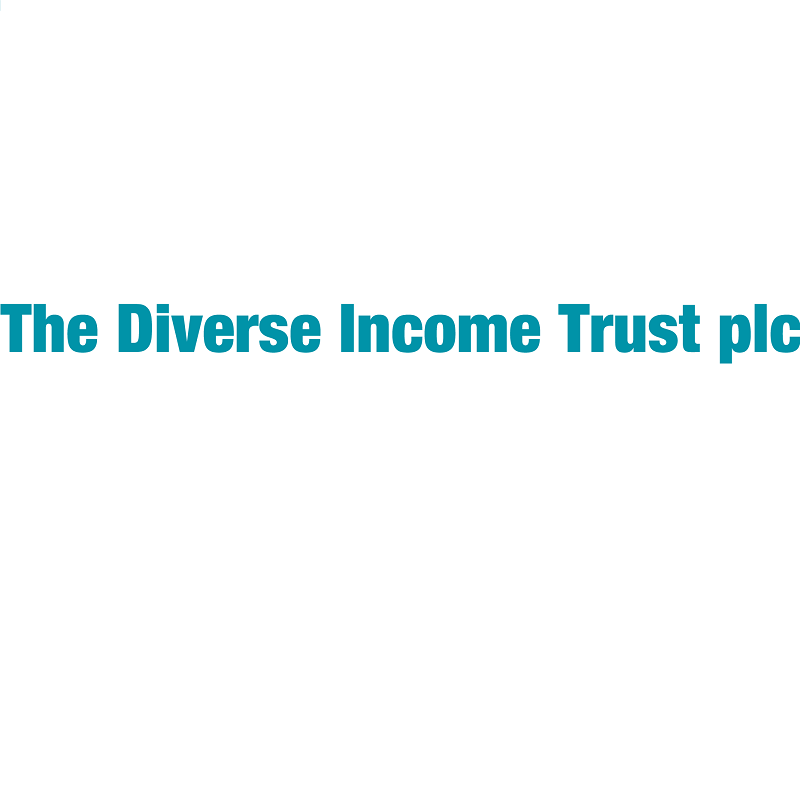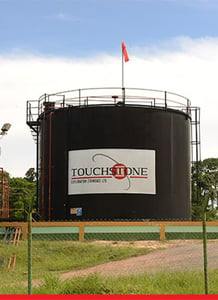Diverse Income Trust plc (LON:DIVI) has presented their half-yearly financial report of the Company for the period to 30 November 2021.
RESULTS FOR THE HALF YEAR TO 30 NOVEMBER 2021
- NAV total return to shareholders of -3.8%, 4.9% behind the return on the UK market This includes the increase in NAV, plus the dividends paid during the half year and compares with an increase in the Numis All-Share Index* of 1.1% on a total return basis over the six months to 30 November 2021. The share price total return was -5.9% as the Company’s shares traded at a discount at the end of November 2021 whilst they traded at a premium at the end of May 2021.
- First half dividend increased The first two interim dividends this year amounted to 1.80 pence per share, a small rise on the 1.75p paid in respect of the same period of 2020. Although there was a 24.3% rise in the revenue return per share during the period, a prudent approach has been taken as 2020 was affected by special factors and the outcome for the current year seems likely to be close to the previous year’s. The Board expects at least to maintain the full year dividend.
- Retained revenue reserves have also increased At the half year, retained revenue reserves were £15.9m, up from £15.2m as at the end of May 2021, and compared to £13.2m of dividends paid to shareholders last year. Over the half year to November 2021, revenue earnings per share more than fully covered the dividends declared, hence the increase in revenue reserves.
* The Company will report its results in relation to Numis UK Equity indices in future, rather than FTSE index comparators. Please seethe Manager’s Report belowfurther details.
Summary of Results
As at 30 November 2021 | As at 30 November 2020 | As at 31 May 2021 | |
| NAV per ordinary share | 111.81p | 97.10p | 118.31p |
| Ordinary share price (mid) | 110.00p | 91.00p | 119.00p |
| (Discount)/premium to NAV1 | (1.62%) | (6.28%) | 0.58% |
| Ordinary shares in issue | 361,445,105 | 358,045,105 | 361,445,105 |
| Period to 30 November 2021 | Period to 30 November 2020 | Period to 31 May 2021 | |
| Revenue return per ordinary share | 2.20p | 1.77p | 3.73p |
| Ongoing charges1 | 1.06%2 | 1.07% | 1.06% |
1 Alternative performance measure. Details provided in the Glossary below.
2 Estimated as at 30 November 2020. Ongoing charges are the Company’s annualised revenue and capitalised expenses (excluding finance costs and certain non-recurring items) expressed as a percentage of the average monthly net assets of the Company during the year
CHAIRMAN’S STATEMENT
This report covers the half year between June and November 2021, when the stock market recovery was unsettled by the revival of inflationary pressures, and a new Covid variant.
Index comparators
Whereas previously the Trust’s returns were stated in the context of a number of FTSE index comparators, in future the Company will report its results in relation to Numis UK Equity indices. Please refer to the Manager’s Report below for further details on this change.
Half year returns
After the 33.2% rise during the previous financial year, the net asset value slipped back 5.5% as investors took a more cautious view of companies’ recovery prospects. This was due to the adverse pressures from cost inflation, supply disruptions and the uncertainty created by the seasonal rise in Covid cases and, at the end of the period, the arrival of the Omicron variant of the virus. Taking account of reinvested dividends (which amounted to 2p per share during the period) the Trust’s NAV total return during the period was -3.9%, which compares with a rise of 1.1% for the Numis All-Share index. The share price total return was -5.9%, as the shares moved from a premium of 0.6% at the end of May 2021 to a discount of 1.6% at the end of November 2021. So the Trust gave back some of the previous year’s outperformance, when on the same basis it had delivered a total return of 38.4%, compared with the market’s return of 25.2%*.
Over the half year the Trust’s revenue per share rose from 1.77p to 2.20p, with the first two interim dividends declared for the 2021-22 financial year amounting to 1.80p compared with 1.75p last year.
After the share prices of many of the Trust’s portfolio holdings appreciated so well in the year to May 2021, there was a degree of profit taking over this half year period. Since many of the largest quoted companies principally operate overseas, the strength of the US Dollar over the half year favoured the larger stocks, with the Numis Large Cap Index up 1.8%. There was some profit-taking amongst smallcap stocks and hence the Numis Smaller Companies Plus AIM Index (excluding Investment Companies) declined by 2.5%.
Returns since the Trust was first listed in April 2011
Over the ten year and seven month period since the Trust was first listed in April 2011, its NAV total return has been 226.5% which compares with the 83.6% total return in the Numis All-Share Index over the same period. Despite the uncertainties of Brexit since 2016, smallcap stocks outperformed over the 10+ years, with the Numis Small Cap Plus AIM Index (excluding Investment Companies) up 132.8% and the Numis Large Cap Index up 69.0%.
Share Issuance and Redemptions
Since the Trust’s share price reflects the balance of buyers and sellers, when there is an imbalance, the Trust’s share price can diverge (upwards or downwards) from its NAV.
In order to help to address any persistent imbalances between buyers and sellers, the Trust offers all shareholders the option to redeem their shares each year. At the end of April 2021, 347,580 shares (0.1% of the issued share capital) were offered for redemption, and these were sold to new investors at the redemption point NAV at the end of May 2021.
Over the half year to November 2021 the Trust’s share price traded at an average of 1.2% below its daily NAV. Since the period end, the Trust’s share price moved to a premium to NAV and 475,000 shares were issued at a premium to NAV in December 2021. As at 11 February 2022, the shares traded at a 0.14% premium to NAV.
Board Refreshment
As indicated in the 2021 Annual Report, a search has been conducted for a new non-Executive Director, using Nurole, an external search agency, and Charles Crole was selected to join the Board with effect from 1 February 2022. Charles has extensive experience as a UK equity fund manager and in the marketing of investment trusts. The Board believes these skills are central to its role and I should like to take this opportunity to welcome him to the Board. With effect from 28 February 2022, Paul Craig is standing down after almost 11 years on the Board. His experience and counsel have served shareholders’ interests well during a decade of significant changes and he leaves with our thanks.
Prospects
Over recent decades, share price appreciation has been driven by ongoing global growth, combined with rising valuations of assets, as long-dated bond yields have declined. More recently however, structural factors have led to a marked slowing of the Chinese economy and, if this trend were to persist, then long-term global growth may also slow. Furthermore, if recent inflationary pressures also turn out to be persistent, then long-dated bond yields could rise further. Both factors are likely to present challenges to stock market indices’ appreciation in future.
Fortunately, the UK stock market includes many relatively young businesses that serve immature markets, where prospects are less reliant on the fluctuations of global growth. The UK’s equity income universe also includes stocks generating abundant surplus cash, which are not reliant on shareholder subscriptions to fund their ongoing growth. Finally, the Trust’s active selection of its portfolio holdings has added considerable incremental outperformance of the comparative indices since it was listed in April 2011.
At times when economic and stock market conditions are more challenging, all three of these factors can offer major advantages. This offers the potential for the Company to continue its record of outperformance, in an environment where the headwinds to UK equity performance in an international context may be reversing, and becoming tailwinds.
Andrew Bell
Chairman
16 February 2022
* This figure refers to total returns based on the Numis All Share Index.
MANAGER’S REPORT
Who are the fund managers of the Trust?
Premier Miton Group plc is an independent, listed fund management company, formed from the merger of Premier Asset Management and Miton Group in November 2019, with a well-established reputation for successfully managing UK-quoted multicap portfolios over the longer term. The Trust’s Board appointed Premier Miton as Manager when it was listed in April 2011.
The day-to-day management of the Trust’s portfolio continues to be carried out by Gervais Williams and Martin Turner, who came together as a team in April 2011.
Gervais Williams
Gervais joined Miton Group in March 2011 and is now Head of Equities in Premier Miton. He has been an equity fund manager since 1985, including 17 years at Gartmore. He was named Fund Manager of the Year by What Investment? in 2014. Gervais is also a board member of the Quoted Companies Alliance and a member of the AIM Advisory Council.
Martin Turner
Martin joined Miton Group in May 2011. Martin qualified as a Chartered Accountant with Arthur Anderson and had senior roles and extensive experience at Merrill Lynch and Collins Stewart.
Martin and Gervais have had a close working relationship since 2004, with complementary expertise that has led them to back a series of successful companies.
Why are the index comparatives used in this report different from those used previously?
When the Trust was first listed in April 2011, the Prospectus highlighted that the Trust would not have a formal stock market index benchmark, given the nature of its multicap portfolio. Even so, it was always envisaged that the Trust would report its results in the context of the returns of various parts of the UK stock market. To date, this has been carried out with reference to the FTSE investment universe, which in this case included the FTSE All-Share Index, the FTSE Small Cap Index (excluding Investment Companies), and the FTSE AIM All-Share Index.
However, given the licensing terms available from London Stock Exchange (who own the FTSE Index data) and the fact that publication of these indices would require a separate licence for the Trust, (notwithstanding that Premier Miton, as Manager, already has a licence), the Trust has decided that reference will only be made to the Numis indices going forward. Premier Miton also has a licence for the use of Numis data, who have confirmed that their terms do extend to the use of the data by Premier Miton clients.
Therefore, to avoid unnecessary costs for the Trust, it will now report its results in the context of the Numis Index data as a performance comparator. Since the Trust was listed in April 2011, the returns of both sets of indices happen to be broadly similar, so the strength Trust’s past record relative to the comparator stock market indices remains largely unchanged.
What were the main contributors to the Trust’s return over the half year?
Over the half year, larger listed stocks in aggregate benefited from the appreciation of the US Dollar, as so many have a very substantial percentage of their operations overseas. The Numis Large Cap Index delivered a total return of 1.8% between May and November 2021, which compares with the Numis Small Companies Plus AIM (excluding Investment Companies) Index that fell by 2.5%. Generally, there was a degree of profit taking amongst small companies after outperformance in previous periods. As the Diverse Equity Income has much larger weightings in AIM listed than the mainstream larger stocks, the trends in the half year amounted to a slight headwind.
Indeed, since many of the AIM listed holdings in the Trust’s portfolio had outperformed by such large percentages in prior periods, the profit-taking in the Trust’s portfolio was little more marked than the indices implied. A good example was the holding in CMC Markets, where substantial profits had already been taken on very strong outperformance in previous periods. Alongside, all the profits had been taken on the holding in IG Index, since the share prices of both it and CMC Markets are relatively closely correlated. Over much of 2021, asset prices have been less volatile and hence the CMC Markets’ share price declined, making it one of the greatest detractors to the Trust’s returns over the half year. Other examples of previous winners peaking out were AO World and Avacta, both of which had also greatly outperformed in previous periods. The Manager has retained the holdings of CMC Markets, AO World and Avacta given their limited correlation with other portfolio holdings, and in expectation that they will generate very substantial cash surpluses in the coming years.
The best contributor to portfolio returns over the half year was William Morrison, the supermarket group, which accepted a premium takeover offer. The share price of River & Mercantile also performed strongly when it announced that it had sold a major part of its business to Schroder for a market capitalisation that was little different from that of the total listed value of the company. Drax Group also was a major contributor, as investors recognised that its investment in the biomass supply chain has put it in a strong position as this industry expands.
What are the main factors that have driven the Trust’s returns since it first listed in April 2011?
Historically, small, quoted companies have outperformed larger quoted companies over the longer term. Alongside, over the ten year and seven-month period since the Company was listed, stock market returns have generally been good. Since the Trust’s listing in April 2011, many AIM listed and small quoted companies have outperformed the rising trends, in spite of the uncertainties of Brexit and the global pandemic. Between April 2011 and November 2021, the Numis Smaller Companies plus AIM Index (excluding Investment Companies) has appreciated by 132.8% which compares with a total return of 69.0% for the Numis Large Companies Index.
During this period, stocks forecast to grow rapidly have tended to outperform those that grow more modestly and generate surplus cashflow that is paid as dividend income, (which includes most of the stocks in the Trust’s portfolio). Despite this factor, active stock selection has greatly enhanced the return of the Trust’s portfolio, such that its NAV total return has risen by 226.5% since issue.
Over the first half, why has the Trust’s revenue per share improved compared with last year?
With the onset of the global pandemic in the half year period to November 2020, a number of the portfolio holdings announced that they would suspend dividends for precautionary reasons. Subsequently, as the global economy recovered, most portfolio holdings have resumed paying dividends. This resumption of dividend payments has led to a major improvement in the Trust’s income after expenses over the half year to November 2021 and led the Trust’s revenue to increase from £6.7m to £8.1m.
Last year, a number of the Trusts’ holdings made up for the cancelled dividends early in the period, with extra one-off dividends in the second half of the Trust’s year to May 2021. This one-off income is not anticipated this year, and hence whilst the underlying dividend income (excluding special dividends) for the current year is expected to increase, we do not expect the percentage improvement to be anything as great as that of the half year figures stated above.
How unusual is the UK quoted small company investment universe?
Sometimes economic conditions can be unsettled and adverse geopolitical events can cause substantial volatility in asset prices. Mainstream stock markets do not always appreciate and sometimes can deliver disappointing returns over several years. During these kinds of periods, institutional investors seek out sectors that have the potential to buck the wider pattern, which includes areas such as smaller quoted companies.
During globalisation, asset market returns have been excellent. Aside from Japan, stock markets around the world have typically delivered strong returns over a number of decades. During this period of plenty, institutional allocations in UK quoted small companies have gradually been crowded out by larger weightings in some of the best performing areas, such as US technology stocks. This trend has been evident globally, with most exchanges dedicated to quoted small companies closed for lack of institutional interest.
Fortunately, the government has sustained support for a number of small companies exchanges in the UK via dedicated tax exemptions. Small, quoted companies have the political advantage that they generate additional skilled employment and increased productivity, and ultimately enhance the tax take for the Exchequer.
As outlined elsewhere in this report, we worry that mainstream stock markets may not continue to deliver strong returns in future. If this is the case, then the UK has a major advantage over others in having retained its vibrant universe of quoted smaller companies – with all the advantages of genuine diversification they bring. If the returns on many mainstream stock markets do disappoint in future, then the ongoing advantages of UK quoted smaller companies could lead to renewed institutional interest. The multicap nature of the Diverse Income Trust strategy would be well placed to participate if this occurred.
What are the prospects for the Trust?
The Company’s strategy differs from most others in its peer group, in that it has greater potential to sustain an attractive return even at times when the mainstream stock market indices may not be steadily rising.
- Specifically, its portfolio invests in a wider opportunity set of quoted companies, and is not as restricted as others to a portion of the investment universe. Hence the portfolio includes many young, immature, businesses that supply industry sectors where demand is growing on a structural basis, rather than being reliant on the cyclical fluctuations of the global economy. Currently, there are indications that the Chinese economy (which has been the cornerstone of past global expansion) has reached a point where its growth may moderate considerably in future. In this is the case, then the Trust’s multicap investment universe could be a major advantage.
- During periods of inflation and rising interest rates, or at times when the cost of labour is rising and corporate profit margins are under pressure, it is usual for a growing number of businesses to run out of cash. Over-indebted businesses often find they are obliged to sell parts of their company, even at disappointing valuations, to repay debt. Others end up in insolvency. At times like this, quoted companies have a major advantage over private businesses, in that they can raise additional capital to acquire the businesses being sold at low valuations, and enhance the potential for the combined businesses to generate further cash surpluses. Whilst such transactions can incrementally enhance the returns of large mainstream quoted companies, the same deal for an AIM quoted business can proportionally deliver much greater enhancement. Hence, when the global economy or the mainstream stock markets are unsettled, the nature of the Trust’s multicap approach has additional advantages.
In summary, since the Trust was first listed, it has delivered returns well ahead of the index comparator. To date, these premium returns have not appeared as differentiated given that so many other strategies have delivered strong returns as well. However, with the prospective yields on long-dated bonds now rising, we believe the Company’s strategy could become more distinctive in future. Furthermore, such a change could initiate a progressive rise in UK weightings that might drive the UK’s outperformance compared to international exchanges. If that were to occur, then the Trust might well become increasingly relevant to a much wider range of investors in future.
Gervais Williams and Martin Turner
16 February 2022
PORTFOLIO INFORMATION
as at 30 November 2021
| Rank Company | Sector & main activity | Valuation £000 | % of net assets | Yield1 % |
| 1 Kenmare Resources | Basic Materials | 8,654 | 2.1 | 2.7 |
| 2 K3 Capital2 | Financials | 8,542 | 2.1 | 3.1 |
| 3 CMC Markets | Financials | 7,204 | 1.8 | 10.7 |
| 4 Strix2 | Industrials | 7,066 | 1.8 | 2.6 |
| 5 Drax | Utilities | 6,579 | 1.6 | 3.2 |
| 6 888 | Consumer Discretionary | 6,430 | 1.6 | 3.6 |
| 7 Randall & Quilter2 | Financials | 6,012 | 1.5 | 1.3 |
| 8 Legal & General | Financials | 5,974 | 1.5 | 6.3 |
| 9 National Grid | Utilities | 5,942 | 1.5 | 4.9 |
| 10 Aferian2 | Telecommunications | 5,742 | 1.4 | 1.8 |
| Top 10 investments | 68,145 | 16.9 | ||
| 11 Sainsbury (J) | Consumer Staples | 5,451 | 1.4 | 3.8 |
| 12 MAN | Financials | 5,450 | 1.3 | 3.4 |
| 13 I3 Energy2 | Energy | 5,450 | 1.3 | 3.3 |
| 14 Phoenix | Financials | 5,444 | 1.3 | 7.5 |
| 15 Tesco | Consumer Staples | 5,313 | 1.3 | 3.5 |
| 16 Touchstone Exploration2 | Oil & Gas | 5,277 | 1.3 | – |
| 17 FRP Advisory2 | Industrials | 5,142 | 1.3 | 3.3 |
| 18 Lords Group Trading2 | Industrials | 5,103 | 1.3 | 0.5 |
| 19 Admiral | Financials | 5,083 | 1.3 | 6.0 |
| 20 DWF | Industrials | 4,831 | 1.2 | 4.2 |
| Top 20 investments | 120,689 | 29.9 | ||
| 21 iEnergizer2 | Industrials | 4,696 | 1.2 | 5.3 |
| 22 Just | Financials | 4,627 | 1.1 | – |
| 23 Direct Line Insurance | Financials | 4,611 | 1.1 | 8.2 |
| 24 Polymetal International | Basic Materials | 4,574 | 1.1 | 7.4 |
| 25 Galliford Try | Industrials | 4,541 | 1.1 | 2.8 |
| 26 XPS Pensions | Financials | 4,479 | 1.1 | 4.9 |
| 27 AVIVA | Financials | 4,412 | 1.1 | 5.5 |
| 28 BT | Telecommunications | 4,357 | 1.1 | – |
| 29 Vodafone | Telecommunications | 4,274 | 1.1 | 7.0 |
| 30 Bloomsbury Publishing | Consumer Discretionary | 4,179 | 1.0 | 5.1 |
| Top 30 investments | 165,439 | 40.9 | ||
| 31 River and Mercantile | Financials | 4,117 | 1.0 | 3.7 |
| 32 Mears | Industrials | 3,936 | 1.0 | 1.3 |
| 33 BHP | Basic Materials | 3,892 | 1.0 | 10.9 |
| 34 Centamin | Basic Materials | 3,849 | 1.0 | 7.0 |
| 35 Jadestone Energy2 | Energy | 3,849 | 1.0 | 1.6 |
| 36 Blackbird2 | Technology | 3,845 | 1.0 | – |
| 37 Inspired2 | Energy | 3,843 | 0.9 | 1.5 |
| 38 IOG2 | Energy | 3,751 | 0.9 | – |
| 39 Sabre Insurance | Financials | 3,746 | 0.9 | 6.3 |
| 40 Paypoint | Industrials | 3,730 | 0.9 | 5.6 |
| Top 40 investments | 203,997 | 50.5 | ||
| Balance held in 82 equity investments | 176,429 | 43.6 | ||
| Total equity investments | 380,426 | 94.1 | ||
| 600 Group 8% Convertible Loan Notes 14/08/2023 | 2,255 | 0.5 | ||
| Fixed interest investments | 2,255 | 0.5 | ||
| Listed Put option | ||||
| UKX – December 2022 6,200 Put | 7,115 | 1.8 | ||
| Traded options | 7,115 | 1.8 | ||
| Total investment portfolio | 389,796 | 96.4 | ||
| Other net current assets | 14,348 | 3.6 | ||
| Net assets | 404,144 | 100.0 |
1 Source: Refinitiv. Based on historical yields and therefore not representative of future yields. Includes special dividends where known.
2 AIM/AQUIS listed.
3 Bermuda Stock Exchange listed.
Portfolio as at 30 November 2021
| Portfolio exposure by sector (%) – £389.8 million | |
| Financials | 30.2 |
| Industrials | 18.2 |
| Basic Materials | 11.4 |
| Consumer Discretionary | 8.5 |
| Energy | 6.6 |
| Consumer Staples | 5.2 |
| Telecoms | 4.2 |
| Utilities | 4.0 |
| Real Estate | 3.4 |
| Technology | 3.2 |
| Health Care | 2.4 |
| Oil & Gas | 2.2 |
| Fixed Interest | 0.5 |
| 100.0 |
| Actual income by sector (%) – £9.0 million | |
| Financials | 35.2 |
| Industrials | 14.8 |
| Basic Materials | 14.7 |
| Consumer Discretionary | 7.7 |
| Energy | 6.0 |
| Telecoms | 4.8 |
| Consumer Staples | 4.5 |
| Technology | 3.6 |
| Utilities | 3.1 |
| Real Estate | 2.2 |
| Oil & Gas | 1.2 |
| Health Care | 1.1 |
| Fixed Interest | 1.1 |
| 100.0 |
The LSE assigns all UK-quoted companies to an industrial sector. The LSE also assigns industrial sectors to many international quoted equities and those that have not been classified by the LSE, have been assigned as though they had. The portfolio as at 30 November 2021 is set out in detail above, in line with that included in the Balance Sheet set out below. The income from investments above comprises all of the income from the portfolio as included in the Income Statement for the six-month period.
The two bars above determine the overall sector weightings of the Company’s capital at the end of the half year and with regard to the income received by the Company over the six-month period.
Investments for Diverse Income Trust’s portfolio are principally selected on their individual merits. As the portfolio evolves, the Manager continuously reviews the portfolio’s overall sector balance to ensure that it remains in line with the underlying conviction of the Manager. The Investment Policy is set out below and details regarding risk diversification and other policies are set out each year in the Annual Report.









































